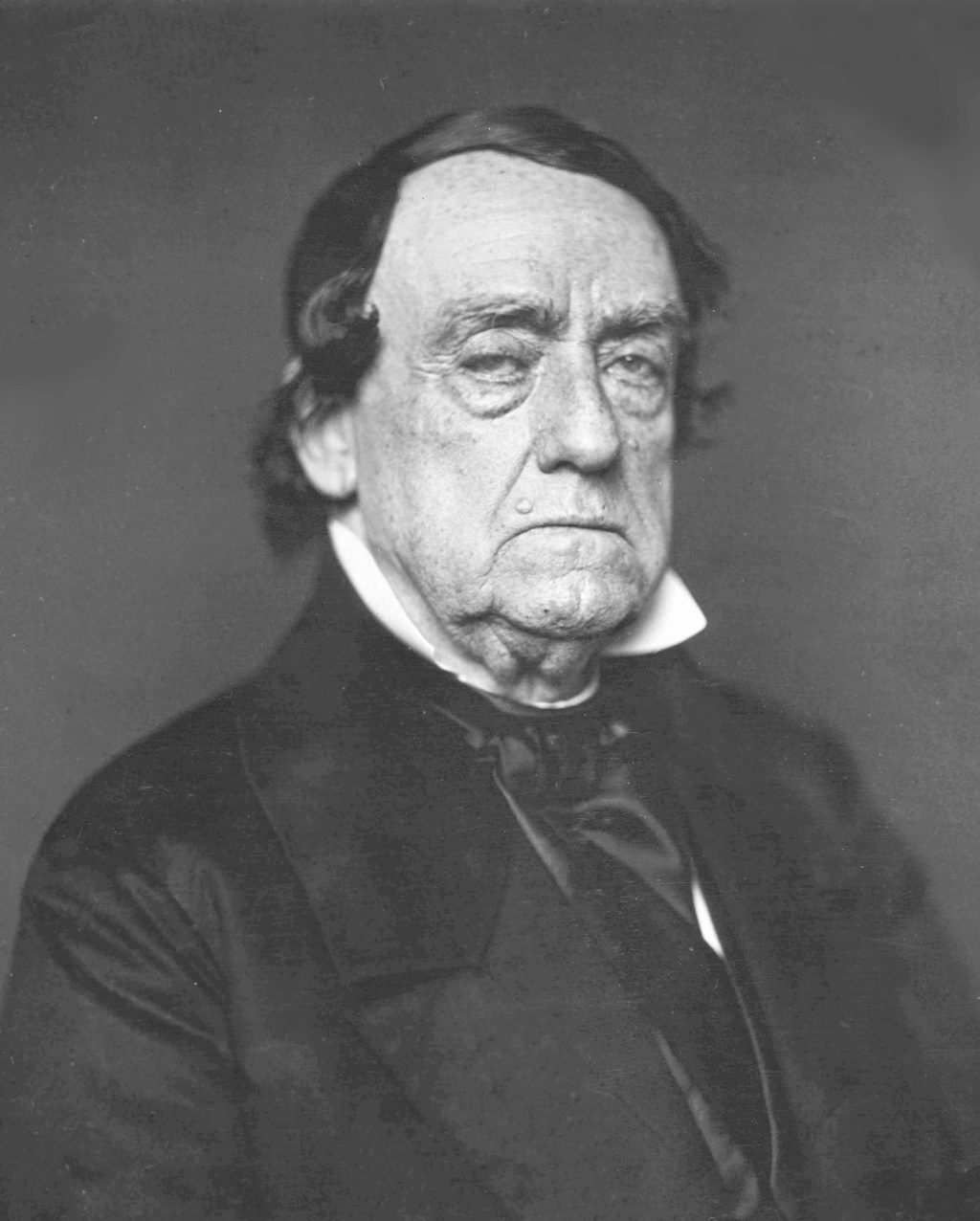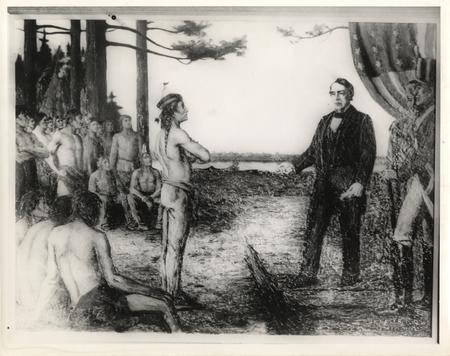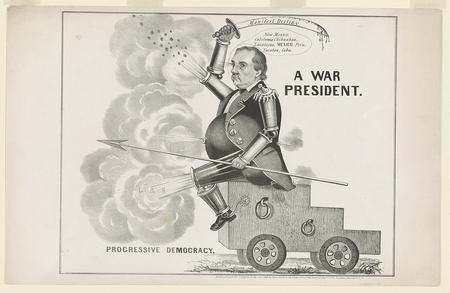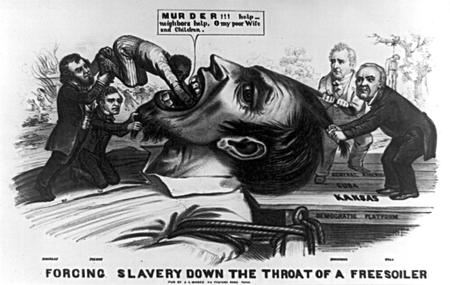CuriosiD: Lewis Cass, Michigan Governor, Architect of Indian Removal
Shelby Jouppi June 27, 2017Cass Avenue, Cass Technical High School, Cassopolis – they’re all named in honor of this guy.

Listener Alli Harnish submitted this question to CuriosiD, and the WDET audience voted to have it answered.
Are the many different Cass locations in Michigan named after Lewis Cass? Do people know how horrible he was?
THE SHORT ANSWER
From the Cass Avenue cultural hub in Detroit to Cass Cliff on Mackinac Island, Michigan is filled with places named in honor of a man with a complicated legacy – Lewis Cass.
Cass was the governor of the Michigan Territory during the early 1800s and is credited with colonizing the unpopular territory and negotiating treaties with Indian tribes to acquire their land. But Cass also used his influence to lobby for the then very controversial policies of Indian removal, the forced relocation of Native tribes west of the Mississippi River, and popular sovereignty, specifically the states’ right to vote on slavery.
While some may excuse Cass by considering him a product of his time, historians agree that he played an instrumental role in these two contentious national debates.
LEWIS CASS IN A NUTSHELL
For a quick version of Lewis Cass’ story, scroll or click through the timeline.
For more details, read the full text below.
Lewis Cass’ 18-year tenure as governor of the Michigan Territory was just one stop on a long political career.
Cass, an easterner from New Hampshire, began as a lawyer in Ohio and moved up the ranks from state representative, to colonel in the War of 1812, and then was promoted to governor of the Michigan Territory. From there he went on to become Secretary of War under Andrew Jackson, ambassador to France, Democratic nominee for U.S. president, and Secretary of State under James Buchanan.
Now that his resume is out of the way, let’s talk about what he really did.
CASS IN MICHIGAN
Promoting the Unpopular Territory
President James Madison appointed Lewis Cass the governor of the Michigan Territory in 1813. Cass was 32 years old.
John Fierst, a reference librarian at Central Michigan University’s Clarke Historical Library, refers to Cass as a “consummate politician.”
“Not everybody liked him even. But he was very good at promoting himself,” says Fierst.
Cass became known for promoting and colonizing the unpopular Michigan Territory. According to Fierst, by attracting settlers to the West, Cass was attempting to secure the Territory and prevent war from breaking out again.

The Michigan Territory was then the frontier of the U.S., and convincing homesteaders to make the trek was difficult. A survey had deemed the entire area an “interminable swamp.”
“What the federal government was trying to do was expand opportunity in the West,” says Amy Elliot Bragg, author of “Hidden History of Detroit.”
“Lewis Cass was kind of charged with this mission to make Michigan seem like a place that people would want to live,” says Bragg.
Cass conducted a new survey, the Cass Expedition, that showed the nation the natural beauty and resources of northern Michigan and Wisconsin.
Negotiating Treaties
Michael Witgen, a professor of history and Native American studies at the University of Michigan, says that most of the territory was recognized as belonging to the Indians.
“If you were a 15-year-old Native in 1805 you would be used to a world that’s all Native if you lived in Michigan,” says Witgen. “And in your lifetime … you would see that world have vanished through a series of treaties that extinguished Native title and convert all that land to public domain available for white settlers.”
During his time as governor, Cass negotiated 20 different treaties with Native American tribes, coercing them to hand their land over to the U.S.
Witgen says that because Cass negotiated so many of these treaties he gained a reputation as a national expert in Indian affairs.
CAMPAIGNING FOR CONTROVERSIAL “INDIAN REMOVAL”
U.S. policy toward Native Americans when Cass was governor was coerced cultural assimilation: tribes would give up their land in exchange for the “civilized” European life as Christian farmers.
Drawing from his experience in Indian affairs, Cass wrote a series of articles in a popular magazine, The North American Review, attempting to convince the white American public that Indians should be moved west of the Mississippi River.
This was a new and controversial idea.


In one of his essays, Cass wrote:
“The Indians are impelled to war by passions. They have not only no principles of religion or morality to repress their passions, but they are urged forward in their career of blood by all around them.”
Cass concluded from his experience fighting in the War of 1812 and negotiating treaties, that Indians were inherently savage and were incapable of assimilating. Therefore, he thought, they should be removed.
According to Fierst, Indian removal was not widely accepted, and it only narrowly passed through Congress.
Witgen calls Cass the “intellectual genius behind” and “architect of Indian removal.”
After the years Cass spent publicly campaigning for Indian removal, President Andrew Jackson appointed him the Secretary of War, then a Cabinet position. Together they implemented the removal of Indian tribes from their land, which resulted in atrocities like the Trail of Tears and the Trail of Death.
“Basically, what we would call it today was a kind of ethnic cleansing,” said Fierst.
LATER POLITICAL CAREER
Lewis Cass ran as the Democratic nominee in the 1848 presidential election. He lost to Zachary Taylor.
During his time in the U.S. Senate in the 1850s, Cass lead the charge in campaigning for the controversial doctrine of popular sovereignty. He argued that states should be allowed to vote on whether or not to allow slavery.
In 1857, Cass became Secretary of State under President James Buchanan.
JUST GOOGLE HIM
A basic Google search will not readily turn up the more unsavory details about Lewis Cass. Historical websites and roadside markers do not mention his influence in the two controversial policies of Indian removal and popular sovereignty.

MEET THE LISTENER
Alli Harnish is a cultural anthropologist and professor at Albion College.
“So pretty quickly upon moving to Michigan, I noticed that there was a lot of ‘Cass,'” she says. She can rattle off about a dozen of them: Cass County, Cass River, Cass Avenue.
Harnish had done some digging into Lewis Cass for a class she was teaching when she uncovered the dark parts of his history. It made her wonder, “Are all of these places named after the same Lewis Cass?” and “Do people know how horrible he was?”
Did you know about Lewis Cass’ full story, or was this new information for you? Tell us about it in the comment section below.
ASK YOUR QUESTION
ABOUT DETROIT OR THE REGION
WDET’s CuriosiD is sponsored by the Michigan Science Center.

